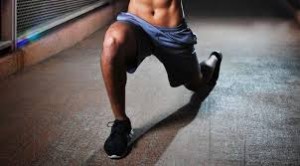 Today– let’s talk about legs. They are the foundation that supports your body. And weak legs signals a body that’s soon to collapse.
Today– let’s talk about legs. They are the foundation that supports your body. And weak legs signals a body that’s soon to collapse.
I exercise my legs at least once per week — unlike bodybuilders who might do two or more leg routines each week trying to get pumped up for competition. If your goal is to maintain health and fitness there is no need to go beyond once per week . . . . especially since most of us are on our feet all day.
When I talk about leg exercises — it is to be distinguished from running which not only exercise’s your legs but also the rest of your body. In running we use our arms to help propel us and this involves the entire upper body. A proper leg workout routine should only focus on the lower portion of your body –from your butt to your calf muscles. Running, like swimming, exercises your entire body.
If your are pre-diabetic and want to reverse the condition then it’s imperative that you add a leg workout routine into your weekly exercise regimen. This is one of the best ways to get more life flowing blood and oxygen going into your legs to help flush out the excess sugars. Peripheral neuropathy is no joke . . . . it can lead to serious consequences.
What will strong legs do for you?
One of the bonus’ of having strong legs is the spill-over effect to other muscles throughout your entire body. For example, when doing squats, your arms and core muscles come into play. . . . you must have a firm grip on the bar and you need to be stable in your core area.
– Your leg muscles are the largest muscle group in your body and you can go heavier than with other muscles. When they get exercised — your body produces more testosterone and human growth hormones which is not just localized in your legs but affects your entire body, as mentioned above.
– If you are an athlete such as a runner, a footballer, basketball player or tennis player — strong legs are a must. It will take your performance to another level.
– Having strong legs will help you lift heavy objects and also avoid injury to your lower back, and believe me — you don’t want this to happen to you . . . . it will surely set back your training. Plus strong legs also enhances other muscle groups.
One of the good things about leg workouts is that you don’t need any special equipment. They can be done at home or anywhere your are . . . . simply by using your own body’s weight.
If you injury your shoulder or arms you can still maintain exercise momentum and not lose muscularity by doing leg exercises. Remember — by working legs your body is secreting growth hormones which affects your entire body.
There are several types of exercises for your legs. The ones I do most are squats, calf raises and lunges. My preference is to use free weights as opposed to assisted leg machines. Many gyms offer these types of machines and they are helpful when starting your exercise program. However as you progress I would recommend switching to free weights since you get more overall muscle action . . . . including activating your core muscles. For more information on how to do these types of exercises please visit my previous blog on leg exercises.
If you plan on doing leg workouts, especially squats, more than once per week, do so with care. It’s very easy to injury the knee joint because of the amount of weight you can potentially lift. At the first sign of any discomfort . . . . stop and reassess your form and motion. Proceed with caution and use protective gears such as knee wraps and ankle wraps and even padding for your neck.
Every two months change up you leg routine. For example, do Bulgarian squats and dead lifts instead of traditional squats and lunges. I am not a big fan of hamstring and quadricep raises even-though I use to do them regularly. I find that they put too much added stress to the knee area. The exercises I describe are more than sufficient to give you legs a complete workout each week.
If you are suffering from pins and needles tingling in your legs doing a consistent and inclusive routine will surely help. Plus — you get to strengthen your body’s foundation which is important as we age.

